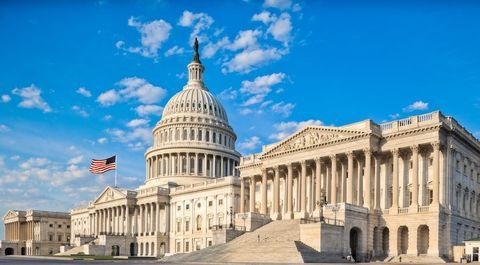EPA Redefines the Scope of Qualifying Cellulosic Biofuel Pathways in the Renewable Fuel Standard Program
Client Alert | 3 min read | 07.08.14
On July 2, 2014, EPA Administrator Gina McCarthy signed a final rule to make several modifications to the Renewable Fuel Standard (RFS) program (40 CFR Part 80, Subpart M) as well as other small changes to federal fuel standards and requirements.
With regard to the RFS, the final rule expands the scope of fuels eligible to generate Renewable Identification Numbers (RINs) for cellulosic biofuel. Cellulosic biofuel is one of four separate fuel mandates imposed by the RFS; in order to qualify as cellulosic biofuel, a renewable fuel must meet a 60 percent threshold for lifecycle greenhouse gas emissions. RINs are used for compliance with the RFS program and may be "banked," traded or sold for use by parties (fuel producers and importers) who must comply with the RFS.
The final rulemaking approves additional cellulosic biofuel pathways for compressed natural gas (CNG) and liquefied natural gas (LNG) produced from biogas from landfills, municipal wastewater treatment facility digesters, agricultural digesters, and separated municipal solid waste digesters. Electricity that is generated from these same biogas feedstocks, and which is delivered to the grid then "used for transportation purposes" was also determined to be an eligible cellulosic biofuel. In both instances, the production of such biofuels is capable of generating cellulosic RINs (i.e., D3 or D7 RINs). EPA had previously determined that biogas derived from landfills, sewage treatment plants, and manure digesters qualified for the generation of advanced biofuel RINs (i.e., D5 RINs).
In the rule signed by Administrator McCarthy, however, EPA deferred making a decision on previously proposed new pathways for advanced butanol, as well as the production of renewable diesel, naphtha and renewable gasoline from biogas. EPA also postponed a proposal to clarify and establish who the RIN "producer" is for each of the new renewable fuel pathways. Instead, EPA says it will evaluate the situation on a case-by-case basis through the registration process and expects that any company that registers to generate cellulosic RINs must be in a position to provide all necessary documentation used to demonstrate compliance.
Under the final rule, the feedstock for cellulosic biofuel must contain at least 75 percent cellulosic material in order to be able to generate cellulosic biofuel RINs for the entire volume of fuel produced. Otherwise, fuel produced from feedstocks that do not meet the 75 percent cellulosic content threshold will still be eligible to generate cellulosic RINs, but only in proportion to the cellulosic content of the feedstock.
For the renewable electricity using the new CNG and LNG pathways, the producer must be able to show movement of gas from the point of extraction of the raw biogas from its original source through all the processing and distribution steps and to its final distribution to customers. When written contracts are not available to verify the chain of title from producer to end-user, the final rule provides that affidavits, which the registered fuel producer would then match to the delivery or sale of an equivalent amount of qualifying renewable CNG/LNG or electricity, will be accepted to prove the use or sale of that fuel for transportation purposes. In addition, for the renewable electricity pathway, EPA decided that it will match generation to use and will not require the purchase or retention of related environmental attributes.
EPA also finalized a number of amendments to current regulations affecting RIN generation and utilization. EPA amended current "crop residue" provisions in RFS regulations and provisions regarding the definition of a "small refinery" for purposes of the RFS program, increased the threshold to 250,000 gallons for a "small blender" or renewable fuel, added a new provision regarding the circumstances under which a company registered to produce renewable fuel may be "deactivated," allowed nameplate capacity to be used for initial registration of a renewable fuel production facility and finalized regulations regarding the "per day" violations for generation and transfer of invalid RINs. EPA also included within the final rule several amendments to a previous rule issued with regard to the "misfueling" of vehicles with E15 (gasoline containing between 10 percent and 15 percent ethanol). EPA also adjusted current requirements concerning the sampling rates related to compliance with the ultra low sulfur diesel program.
Amendments to all fuel programs will become effective 30 days after publication of the final rule in the Federal Register.
Contacts
Insights
Client Alert | 2 min read | 12.29.25
FYI – GAO Finds Key Person “Available” Despite Accepting Employment with a Different Company
GAO’s key personnel rule is well-known—and often a source of frustration— amongst government contractors. Proposed key personnel who become “unavailable” prior to contract award—especially where they have accepted employment with a different company—may doom an offeror’s proposal by rendering it noncompliant with solicitation requirements. But GAO’s recent decision in FYI – For Your Information, Inc., B-423774, B-423774.2 (Dec. 19, 2025) provides some potential relief from that rule.
Client Alert | 6 min read | 12.29.25
Investor Advisory Committee Recommends SEC Disclosure Guidelines for Artificial Intelligence
Client Alert | 4 min read | 12.29.25
More Than Math: How Desjardins Recognizes AI Innovations as Patent-Eligible Technology
Client Alert | 10 min read | 12.24.25



